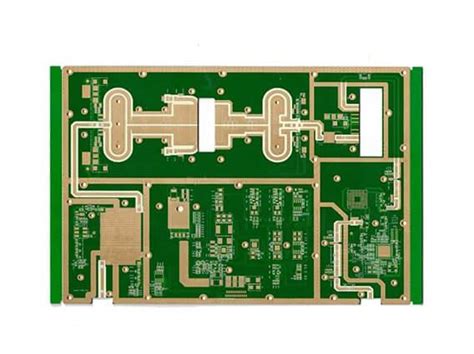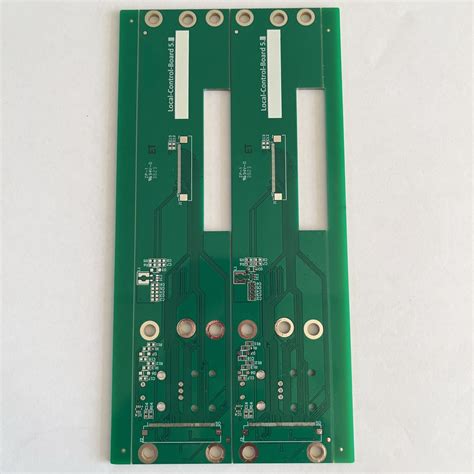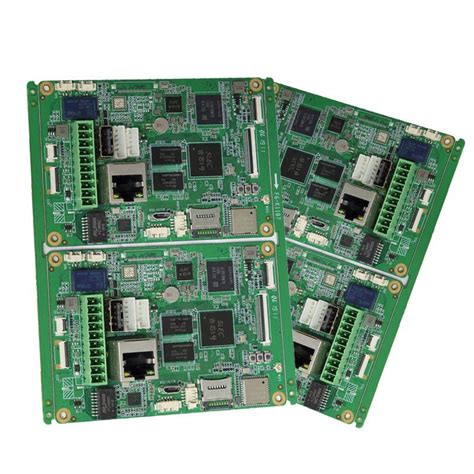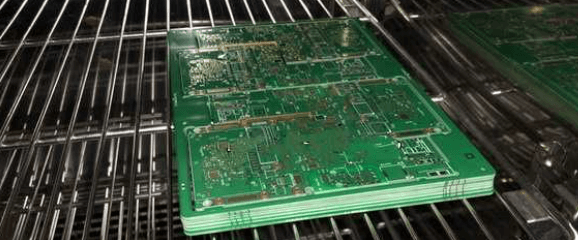Ceramic substrate for pcb
Advantages Of Using Ceramic Substrates In PCB Design
Ceramic substrates have emerged as a pivotal component in the design and manufacturing of printed circuit boards (PCBs), offering a range of advantages that make them an attractive choice for various applications. As the demand for more efficient, reliable, and compact electronic devices continues to grow, the role of ceramic substrates in PCB design becomes increasingly significant.
One of the primary advantages of using ceramic substrates is their exceptional thermal conductivity.
Unlike traditional materials such as FR-4, ceramics can efficiently dissipate heat, which is crucial for high-power applications. This property helps in maintaining the performance and longevity of electronic components by preventing overheating, thereby enhancing the overall reliability of the device.
In addition to their thermal management capabilities, ceramic substrates also exhibit excellent electrical insulation properties.
This characteristic is particularly beneficial in high-frequency applications where signal integrity is paramount. The low dielectric constant and loss tangent of ceramics ensure minimal signal distortion, which is essential for maintaining the performance of high-speed circuits. Furthermore, the inherent rigidity and mechanical strength of ceramic materials provide robust support for the components mounted on the PCB, reducing the risk of mechanical failure and enhancing the durability of the device.
Moreover, ceramic substrates are known for their chemical stability and resistance to environmental factors such as moisture and corrosion.
This makes them ideal for use in harsh environments where traditional PCB materials might degrade over time. The ability to withstand extreme conditions without compromising performance is a significant advantage for applications in industries such as aerospace, automotive, and telecommunications, where reliability is critical.
Another noteworthy benefit of ceramic substrates is their compatibility with advanced manufacturing techniques.
The precision and versatility of ceramic processing allow for the integration of complex circuit designs and miniaturization of components, which is increasingly important in the development of compact and lightweight electronic devices. This compatibility extends to the use of various metallization techniques, enabling the creation of intricate circuit patterns and facilitating the incorporation of advanced features such as embedded components and multilayer structures.
Furthermore, the use of ceramic substrates can lead to cost savings in the long term.
Although the initial cost of ceramic materials may be higher compared to traditional substrates, their superior performance and durability can result in reduced maintenance and replacement costs. Additionally, the enhanced thermal management capabilities of ceramics can lead to lower energy consumption, further contributing to cost efficiency.
In conclusion, the advantages of using ceramic substrates in PCB design are manifold, encompassing superior thermal and electrical properties, mechanical strength, chemical stability, and compatibility with advanced manufacturing processes. These attributes make ceramic substrates an ideal choice for a wide range of applications, particularly those requiring high performance and reliability in challenging environments. As technology continues to evolve, the role of ceramic substrates in PCB design is likely to expand, driven by the ongoing demand for more efficient and compact electronic solutions. The integration of ceramic substrates into PCB design not only addresses current technological challenges but also paves the way for future innovations in the electronics industry.

Thermal Management Solutions With Ceramic Substrates
In the realm of electronic design, thermal management is a critical consideration, particularly as devices become more compact and powerful.
One innovative solution that has gained prominence is the use of ceramic substrates for printed circuit boards (PCBs). These substrates offer a range of benefits that make them an attractive option for managing heat in electronic applications.
As electronic components generate heat during operation, effective thermal management is essential to ensure reliability and longevity.
Traditional materials, such as FR-4, often fall short in high-temperature environments, leading to potential failures. In contrast, ceramic substrates provide superior thermal conductivity, which is crucial for dissipating heat efficiently. This property allows for the maintenance of optimal operating temperatures, thereby enhancing the performance and durability of electronic devices.
Moreover, ceramic substrates exhibit excellent thermal stability, which is vital for applications subjected to fluctuating temperatures.
Unlike conventional materials, ceramics can withstand extreme thermal cycling without degrading, making them ideal for use in harsh environments. This stability ensures that the electronic components remain protected, reducing the risk of thermal-induced failures. Additionally, the inherent electrical insulation properties of ceramics contribute to their effectiveness in thermal management. By preventing electrical interference, ceramic substrates help maintain the integrity of the electronic signals, which is particularly important in high-frequency applications. This characteristic, combined with their thermal properties, makes ceramic substrates a comprehensive solution for managing both heat and electrical performance.
Furthermore, the mechanical strength of ceramic substrates is another advantage that cannot be overlooked.
Their robust nature allows them to support the weight of components and withstand mechanical stresses, which is essential in applications where durability is a priority. This strength, coupled with their lightweight nature, makes ceramic substrates suitable for a wide range of applications, from consumer electronics to aerospace technology. In addition to their functional benefits, ceramic substrates also offer design flexibility. They can be manufactured in various shapes and sizes, allowing for customization to meet specific application requirements. This adaptability ensures that designers can optimize the layout of the PCB to enhance thermal management and overall performance.
Despite these advantages, it is important to consider the cost implications of using ceramic substrates.
They are generally more expensive than traditional materials, which can be a limiting factor for some applications. However, the long-term benefits, such as improved reliability and reduced maintenance costs, often justify the initial investment. As technology continues to advance, the demand for efficient thermal management solutions will only increase. Ceramic substrates are well-positioned to meet this demand, offering a combination of thermal, electrical, and mechanical properties that are unmatched by traditional materials. By integrating ceramic substrates into PCB design, manufacturers can enhance the performance and reliability of their products, ultimately leading to greater customer satisfaction.
In conclusion, ceramic substrates represent a significant advancement in thermal management solutions for PCBs.
Their superior thermal conductivity, stability, and mechanical strength make them an ideal choice for a variety of applications. While the cost may be higher than traditional materials, the long-term benefits often outweigh the initial investment. As electronic devices continue to evolve, the role of ceramic substrates in ensuring efficient thermal management will undoubtedly become increasingly important, paving the way for more reliable and high-performing electronic systems.

Comparing Ceramic Substrates To Traditional PCB Materials
In the realm of printed circuit boards (PCBs), the choice of substrate material plays a crucial role in determining the performance, reliability, and longevity of electronic devices. Traditionally, materials such as FR-4, a composite of woven fiberglass cloth with an epoxy resin binder, have dominated the PCB industry due to their cost-effectiveness and satisfactory performance in a wide range of applications.
However, as electronic devices become more sophisticated and demand higher performance, alternative materials like ceramic substrates are gaining attention. Understanding the differences between ceramic substrates and traditional PCB materials is essential for making informed decisions in electronic design and manufacturing.
Ceramic substrates, typically made from materials such as alumina, aluminum nitride, or beryllium oxide, offer several advantages over conventional PCB materials.
One of the most significant benefits is their superior thermal conductivity. Unlike FR-4, which has relatively low thermal conductivity, ceramic substrates can efficiently dissipate heat, making them ideal for high-power applications where thermal management is critical. This property helps prevent overheating, thereby enhancing the reliability and lifespan of electronic components.
Moreover, ceramic substrates exhibit excellent electrical insulation properties.
This characteristic is particularly beneficial in high-frequency applications where signal integrity is paramount. The low dielectric constant and loss tangent of ceramics minimize signal loss and crosstalk, ensuring that high-speed signals are transmitted with minimal distortion. Consequently, ceramic substrates are often preferred in applications such as RF modules, microwave circuits, and high-frequency communication devices.
In addition to thermal and electrical advantages, ceramic substrates are known for their mechanical robustness.
They possess high strength and rigidity, which contribute to the structural integrity of the PCB. This robustness is especially advantageous in environments subject to mechanical stress or vibration, where traditional materials might fail. Furthermore, ceramics are inherently resistant to chemical corrosion and moisture, providing an added layer of protection in harsh operating conditions.
Despite these advantages, there are certain challenges associated with the use of ceramic substrates.
One of the primary drawbacks is cost. Ceramic materials and the processes required to manufacture ceramic-based PCBs are generally more expensive than those for traditional materials. This cost factor can be a significant consideration, particularly for consumer electronics where price competitiveness is crucial. Additionally, the brittleness of ceramics can pose challenges during the manufacturing and handling processes, necessitating careful design and processing to avoid damage.
Transitioning from traditional PCB materials to ceramic substrates also requires a reevaluation of design and manufacturing practices.
Engineers must consider the unique properties of ceramics, such as their thermal expansion coefficients, which differ from those of metals used in electronic components. This consideration is vital to prevent issues like thermal mismatch, which can lead to mechanical failure.
In conclusion, while ceramic substrates offer compelling advantages in terms of thermal management, electrical performance, and mechanical strength, they also present challenges that must be carefully managed. The decision to use ceramic substrates over traditional PCB materials should be based on a thorough analysis of the specific requirements of the application, weighing the benefits against the costs and potential challenges. As technology continues to advance, the role of ceramic substrates in the PCB industry is likely to grow, driven by the increasing demand for high-performance, reliable electronic devices.

Innovations In Ceramic Substrate Technology For PCBs
Ceramic substrates have emerged as a pivotal innovation in the realm of printed circuit boards (PCBs), offering a host of advantages that are increasingly being leveraged in various high-performance applications. As the demand for miniaturization and enhanced functionality in electronic devices continues to grow, the role of ceramic substrates becomes ever more critical.
These substrates are primarily composed of materials such as alumina, aluminum nitride, and beryllium oxide, each offering unique properties that make them suitable for specific applications. The inherent thermal conductivity of ceramic materials is one of their most significant advantages, allowing for efficient heat dissipation in high-power electronic components. This characteristic is particularly beneficial in applications where thermal management is crucial, such as in power electronics and LED technology.
Moreover, ceramic substrates exhibit excellent electrical insulation properties, which are essential for maintaining the integrity of electronic circuits.
This feature ensures that the electronic components mounted on the substrate are protected from electrical interference, thereby enhancing the overall reliability and performance of the device. In addition to their thermal and electrical properties, ceramic substrates are also known for their mechanical strength and chemical stability. These attributes make them highly durable and resistant to harsh environmental conditions, which is a critical consideration in industries such as aerospace and automotive, where devices are often exposed to extreme temperatures and corrosive environments.
The advancements in ceramic substrate technology have also led to the development of innovative manufacturing techniques that further enhance their applicability.
For instance, the introduction of low-temperature co-fired ceramics (LTCC) has revolutionized the production process by allowing multiple layers of ceramic and metal to be co-fired at relatively low temperatures. This technique not only reduces manufacturing costs but also enables the integration of more complex circuit designs, thereby expanding the potential applications of ceramic substrates. Furthermore, the use of additive manufacturing techniques, such as 3D printing, is beginning to make inroads into the production of ceramic substrates. This approach offers the possibility of creating highly customized and intricate designs that were previously unattainable with traditional manufacturing methods.
Despite these advancements, there are still challenges that need to be addressed to fully realize the potential of ceramic substrates in PCB technology.
One of the primary challenges is the cost associated with ceramic materials, which can be significantly higher than that of traditional substrates like FR-4. However, ongoing research and development efforts are focused on finding cost-effective solutions, such as the use of alternative materials and improved manufacturing processes, to make ceramic substrates more accessible for a wider range of applications. Additionally, the brittleness of ceramic materials poses a challenge in terms of handling and processing, necessitating the development of specialized techniques to mitigate the risk of damage during manufacturing and assembly.
In conclusion, the innovations in ceramic substrate technology for PCBs are paving the way for more efficient, reliable, and durable electronic devices. As research continues to address the existing challenges and explore new possibilities, it is anticipated that ceramic substrates will play an increasingly prominent role in the future of electronic design and manufacturing. The ongoing advancements not only highlight the versatility and potential of ceramic materials but also underscore their importance in meeting the ever-evolving demands of modern technology.







